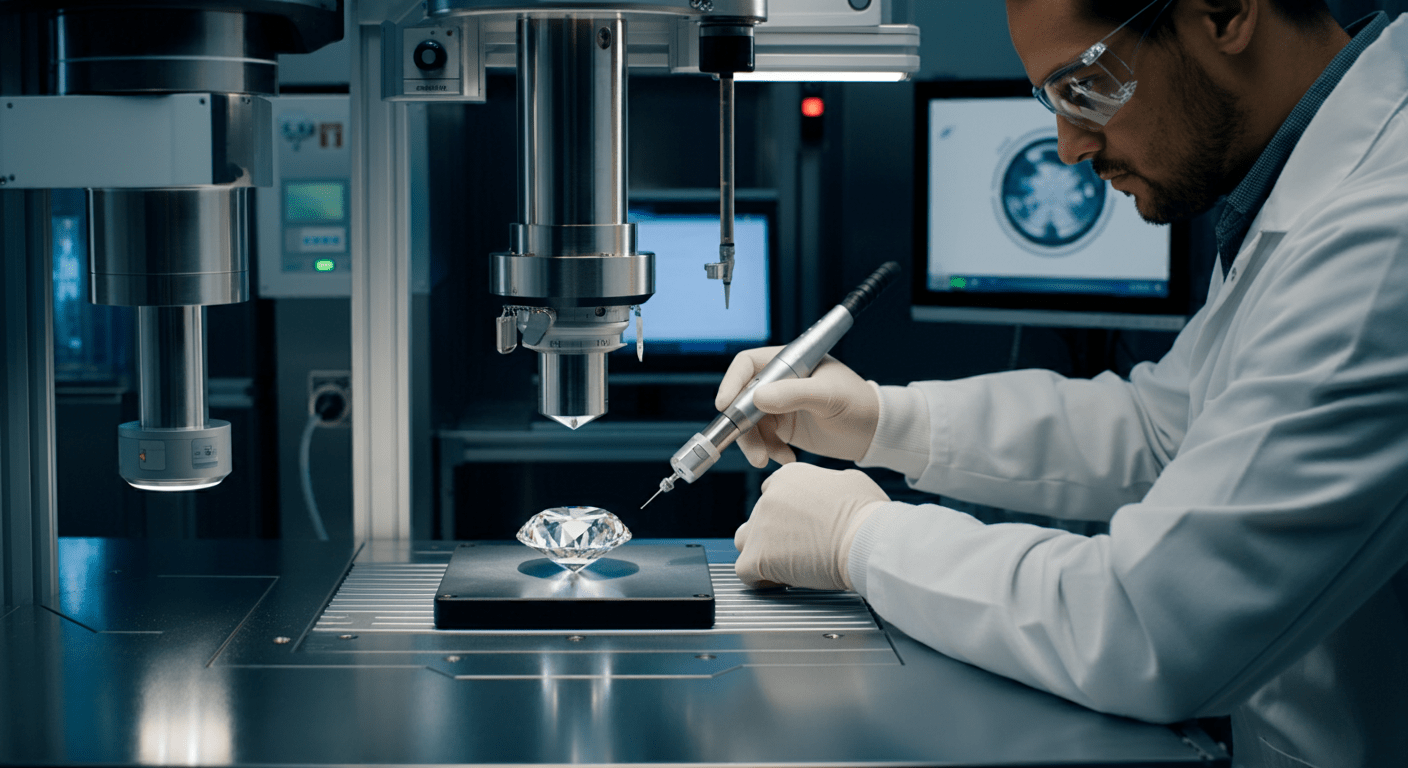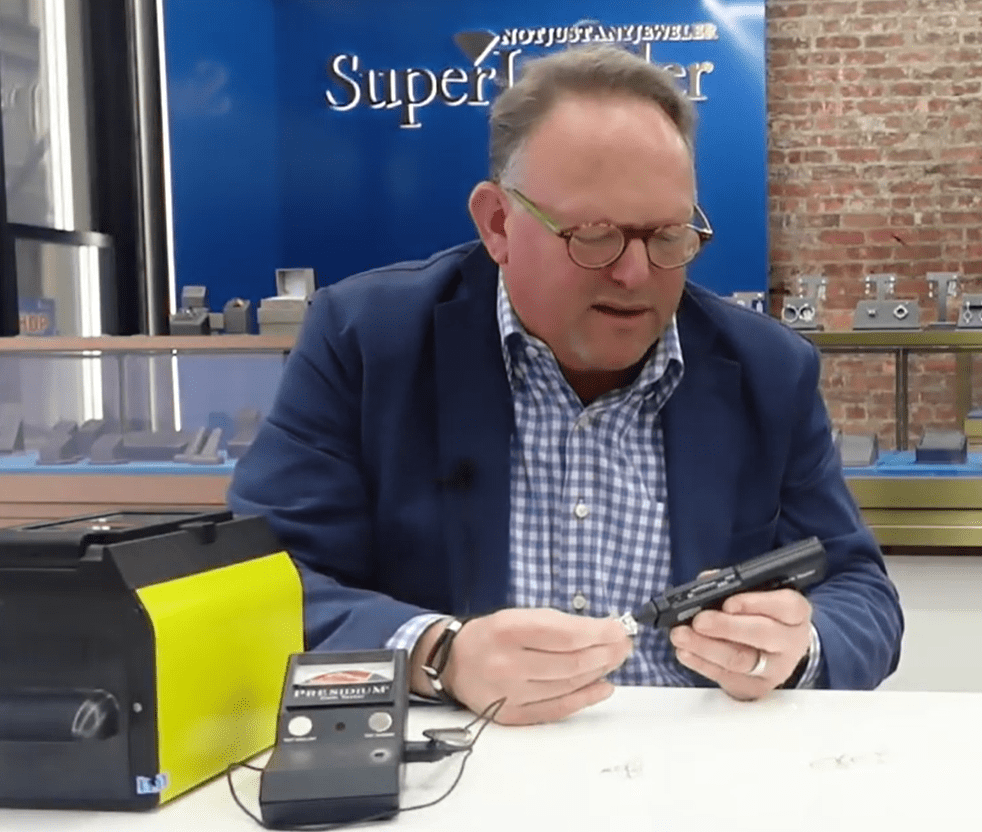Introduction
Every so often, someone takes their lab-grown diamond to a jeweler, and the tester says it’s moissanite. Panic follows almost instantly. The idea that your beautiful diamond might not be a “real” diamond is unsettling. But here’s the truth: in nearly every case, it isn’t the stone that’s wrong – it’s the tool. Many jewelers still use old testing devices that weren’t built for modern lab-grown diamonds.
Where the Confusion Comes From
Lab-grown diamonds aren’t imitation stones. They’re chemically identical to natural ones — both are pure carbon, both are equally hard, and both sparkle with that same unmistakable brilliance. The problem is that many testers on the market measure only how heat moves through the stone.
Moissanite and diamond conduct heat in very similar ways, which is why a tester that relies on heat alone can get confused. Even minor things – like room temperature, a loose wire, or a device that hasn’t been calibrated – can change the reading. So when a jeweler’s tool flashes “moissanite,” it doesn’t mean your diamond is fake. It just means the device isn’t precise enough.
When a Test Gives the Wrong Impression
Imagine walking into a jewelry store to have your ring checked and hearing that it might not be a diamond after all. That moment hits hard. People attach memories to jewelry — proposals, milestones, love stories. Being told it’s not what you thought it was can sting.

Professional gemologists know that these quick tests aren’t foolproof. The most reliable results come from dual-conductivity testers or, better yet, a gemological laboratory. Those methods analyze both heat and electrical properties to give a clear, accurate result every time.
Why Some Jewelers Add to the Confusion
In many cases, jewelers simply don’t realize their testers are outdated. But sometimes, doubt can work in their favor. If a customer loses confidence in a piece, they may end up shopping for something new.
This is why it helps to understand the science yourself. When you know how diamond testing actually works, you’re less likely to be swayed by a quick — and possibly inaccurate — result.
Lab-Grown vs. Natural Diamonds
Jewelry expert Mr Andrew Fox, who has spent decades studying and grading diamonds, often points out that lab-grown and natural stones look almost identical to the naked eye. The tiny differences show up only under magnification:

- Lab-grown diamonds can have thin, flat inclusions.
- Natural diamonds tend to have clustered or cloud-like inclusions.
Both are dazzling, durable, and made of the same element. The only real difference lies in where they’re formed — one deep in the earth, the other in a high-tech lab.
The Trouble With Outdated Testers
For years, many jewelers relied on a device called the Presidium tester. It measures heat conductivity — and that’s about it. It was groundbreaking in its time but limited by today’s standards.
Modern testers can check both heat and electrical conductivity, which allows them to tell moissanite and diamond apart with accuracy. Without those updates, the same diamond might test as “diamond” one moment and “moissanite” the next. That’s not the stone changing — that’s the machine guessing.
A Brief History of Lab-Grown Diamonds
The journey of lab-grown diamonds goes back almost a century:
- In the 1940s, scientists created the first ones for industrial purposes.
- By the 1990s, technology made gem-quality stones possible.
- In the 2010s, they reached jewelry counters around the world.
- By the 2020s, they became a popular, sustainable choice for engagement rings and fine jewelry.
Over time, lab-grown diamonds have gained respect not as a substitute, but as a modern, ethical alternative to mined stones.
Why You Shouldn’t Worry
If your diamond once tested as moissanite, don’t lose sleep over it. When examined properly, lab-grown diamonds always verify as real. They’re chemically identical to natural diamonds — same strength, same fire, same sparkle.
The difference lies in how they’re born: one through geological time, the other through human innovation. Both are beautiful. Both are real.
Learning More

Curiosity is a good thing in jewelry. If you’re ever unsure, learn about how testing works. Reputable gemological institutes and education sites explain the differences clearly. Understanding the process makes you a smarter buyer — and a more confident one.
Final Thoughts
The confusion over lab-grown diamonds testing as moissanite has nothing to do with dishonesty or low quality. It’s simply a matter of old tools struggling to keep up with new science. As testing technology improves, this misunderstanding will fade away. What will remain is the brilliance of lab-grown diamonds — proof that real beauty can come from innovation just as much as from nature.
Written by Andrew Fox — a jewelry specialist experienced in diamond grading, gemstone analysis, and jewelry design. He currently serves as CEO of SuperJeweler.com, where he focuses on making gemology education accessible and believes that knowledge is the most valuable accessory you can wear.
